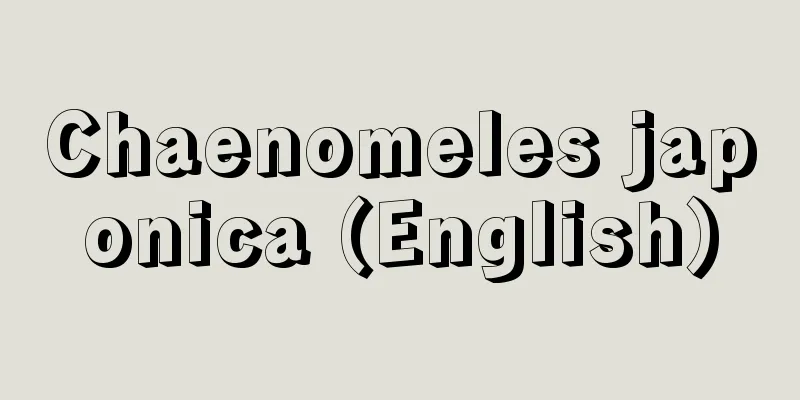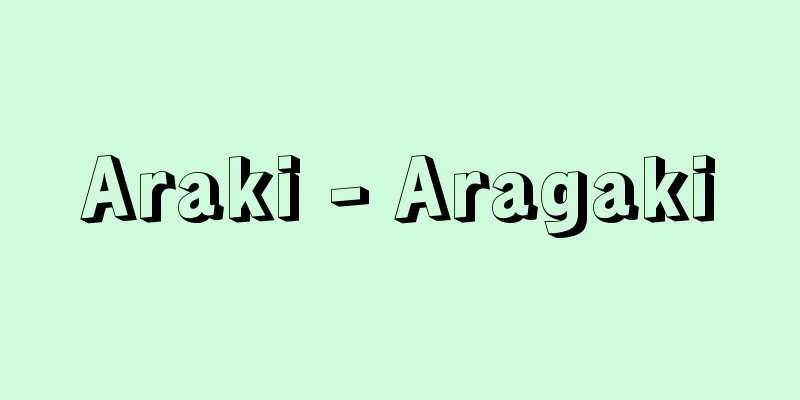Apartment complex - shuugoujutaku

|
An apartment building is one in which many residences exist within one building; in other words, the interior of the building is divided into several sections by walls and floors, each of which is an independent residence. There are several terms similar to apartment buildings. "Apartment building" is a general term for housing that is planned and constructed collectively on a block of land, and can be used for both single-family homes and apartment buildings. "Co-op housing" refers to a single building where houses are stacked one on top of the other, commonly known as an apartment, and they share a common entrance. "Row house" and "row house" are a single building that is connected on the floor plan, and each unit has its own entrance. In terms of overseas names, collective housing is called a flat in the UK and an apartment in the US. In both countries, houses with each unit having a garden (either detached or row houses) are collectively called a house, and are clearly distinguished from ungrounded flats and apartments. There are three types of houses: detached houses, semi-detached houses, and terraced houses. The latter are also called townhouses. Houses are generally single-story or two-storey, but sometimes three-storey. In multi-storey apartment buildings, if each unit is contained within a single floor (single-storey), it is called a flat, whereas if the units are stacked on top of each other in a two-storey format, it is called a maisonette. Buildings are classified as low-rise, mid-rise, or high-rise depending on the number of floors they have; conventionally, buildings on the first to third floors are called low-rise, floors four and five are mid-rise, and buildings six floors or above that require elevators are called high-rise. [Yasuhiro Endo] historyworldApartment buildings have been around since the beginning of humankind's history of living together. Around 3000 BC, the first cities developed in Mesopotamia and Egypt, where people lived in mud-brick dwellings that were closely packed together horizontally along narrow, winding corridors. However, the first experience of living on top of one another in human history was seen in the densely populated Egyptian city of Thebes (the capital of Egypt from around 1580 BC to around 1085 BC). Wall paintings from that time suggest the existence of four-story apartment buildings already at that time. It was during the Roman period that it became common for common people to live in multi-storey apartment buildings. In an era without public transportation, multi-storey houses called insulas, which consist of apartments stacked on top of each other, were used as a way to cram a growing population into a relatively small space. Looking at reconstruction drawings of apartment buildings from that time, the exteriors look very modern, but the foundations and structures were full of defects, and entire buildings have collapsed in some cases. There were no plumbing inside the buildings, so ordinary people had to go to the street fountains to get water and carry it upstairs. Medieval walled cities, especially those in Italy, contained multi-storey apartment buildings. However, it was not until the Industrial Revolution in the 18th century, when workers began to flock to cities, that full-scale apartment buildings in the modern sense began to be built. In the 20th century, European countries began to generalize a system in which the state provided high-quality, low-rent apartment buildings for workers. After the two world wars, the technology for building apartment buildings improved in both planning and production. [Yasuhiro Endo] JapanAs nagaya is a type of apartment building, Japanese apartment buildings date back to the time of the Nihon Shoki and Manyoshu, where nagaya first appeared in literature. However, nagaya became common as a home for ordinary urban people with the development of rental houses in Kyoto and Osaka from the end of the Muromachi period. During the Edo period, as castle towns and commercial cities developed, including Edo, Kyoto, and Osaka, influential townspeople built nagaya within or behind their own estates, let tenants live there, and used them as a way to accumulate wealth and make money. The first multi-storey apartment building in Japan was the Shitaya Ueno Club, a five-story wooden apartment building housing 60 units built in Tokyo in 1910 (Meiji 43). The first reinforced concrete apartment building was a nine-story company housing building built by Mitsubishi in 1915 (Taisho 4) on Hashima Island, 18 km from Nagasaki. As part of the reconstruction efforts following the Great Kanto Earthquake of 1923 (Taisho 12), the Dojunkai association began constructing reinforced concrete apartment buildings. The Dojunkai apartments built in various locations throughout Tokyo (Daikanyama, Aoyama, etc.) and Yokohama city realized the most progressive and culturally-oriented residential lifestyle before World War II through their excellent planning and design. The first postwar apartment buildings were built as public housing in Takanawa, Tokyo in 1948 (Showa 23). Apartment buildings first came into the spotlight in 1955 when the Japan Housing Corporation (which became the Housing and Urban Development Corporation in 1981, the Urban Development Corporation in 1999, and the Urban Renaissance Agency in 2004) was launched and the construction of apartment buildings in groups, in other words, as danchi, became commonplace. In 1958, when the number of people living in reinforced concrete apartment buildings reached one million, a weekly magazine ran a feature on the "Danchi tribe," and since then "Danchi" has become a common term for city dwellers. [Yasuhiro Endo] Modern housing complexes overseasThere is one characteristic of modern apartment buildings around the world. It is the shift from high-rise buildings to low- and mid-rise apartment buildings. Let's look at typical examples in Europe and the United States. [Yasuhiro Endo] EnglandAfter the Second World War, the UK made a sudden shift from low-rise to high-rise buildings in order to build a large number of houses, but it quickly retreated from them. In other words, flats made up 32% of the country's population in the 1950s, but gradually increased in the 1960s, reaching 53% in 1966. However, in 1968, the era of high-rise housing in the 1960s came to an end in the UK. The gas explosion at Ronan Point in London in May of that year (which caused a considerable number of deaths and serious and minor injuries) prompted the government housing authorities to decide to remove high-rise housing from their policy menu, against the backdrop of criticism of high-rise housing that had been building up for some time. High-rise buildings have been increasingly criticized for being expensive to build and maintain, for eliciting deep psychological reactions from people against the size of the buildings themselves (feelings of powerlessness and social isolation), for being breeding grounds for crime and for destroying the living environment through vandalism, and for being physiologically and psychologically undesirable as a living environment for raising children. Since the 1970s, public housing construction in Greater London has basically stopped with high-rise buildings, and low-rise and mid-rise apartment buildings have become mainstream. Let's take the Marquis Road public housing estate, a concrete example located in a densely built-up area near the center of London, as a redevelopment project with 1,185 units. In terms of the form of the collective housing, it is an interesting 3-5 story semi-grounded urban housing. The first 3 stories are composed of grounded housing for families with children as a crossover section, and the senior citizens' residence sits on top of the ceiling slab on the 3rd floor, separated by a corridor. This corridor is called a roof street or pedestrian deck, and when you actually go up to this level, you can see the elderly people sunbathing and chatting comfortably, and there are beautiful flowers blooming everywhere, which is reminiscent of the alleyways of traditional Japanese row houses. The planning principles of British housing complexes are perfectly utilized here: first, families with growing children are allowed direct access to the outdoors, and second, elderly people are grouped together in a way that allows them to form a community together. Another typical example of modern British housing is Odam, a redeveloped housing complex in the city center of Covent Garden. It is a five-storey housing complex with 102 units on a site of only 7,000 square meters. Usually, when we think of mid-rise housing complexes, they are often shaped like slabs of yokan, but this one has a completely different style. It has a relatively solid wall facing the surrounding blocks, but on the inside it has an open common garden and a varied private garden (patio), and a cluster of 12 houses comes together to form a single residential block (block). Modern housing complexes inevitably become uniform and monotonous due to mass production and rationalization, but this is a housing complex with a unique expression that makes use of the community feeling of the area. On the fourth floor there is a multi-level street (floor gallery) connected to the ground floor by elevator, and on this level there are 30 units of sheltered housing for the elderly. Sheltered housing is a specially designed apartment complex for the elderly, with live-in caregivers. Although it is located in the city center, each unit in this housing complex has a large private garden, which plays the same role as the garden of a ground-based house. This housing complex, where children can live safely and people of all ages can live together, and which creates a positive expression for the surrounding streetscape, is attracting attention as a high-density, comfortable housing complex that forms a streetscape. [Yasuhiro Endo] AmericaA shocking incident also occurred in the United States, where a high-rise apartment complex that was said to be the pinnacle of modern architecture was forced to change. In July 1972, the Pruitt-Igoe housing complex in St. Louis, Missouri was bombed. This public housing complex (11-story high-rise apartment complex, 2,764 units) was a glorious example of modern architecture, receiving an architecture award from the AIA (American Institute of Architects) in 1951, and was said to have perfectly provided "sun, air, and greenery," one of Le Corbusier's "three pleasures of the city," which were the aims of modern apartment planning. But the basic characteristics of these high-rise housing estates - long corridors, anonymity, lack of semi-private space - led to constant vandalism in the towers, which were then blown up by city authorities who were overwhelmed by the need to control them. This symbolic event in the history of modern apartment complex planning led to emphasis being placed on planning indicators such as fostering a sense of community among residents, keeping children safe in the outdoors, safety, maintenance, ease of living, empathy with continuity with neighbors, and flexibility in how space can be used in subsequent American apartment complex planning. Since the 1970s, development of low-rise, high-density housing has become popular as an apartment complex that can embody these aims. For example, in the Golden Gate Center redevelopment project in San Francisco, high-rise housing was built in the 1960s, but the subsequent rise in construction costs and changes in the housing market led to a growing trend to avoid high-rise buildings, and surrounding residents became very sensitive about the impact of high-rise buildings on the surrounding area. In order to overcome these issues, the adjacent block built in the late 1970s changed its style to one where the first and second floors were used for offices and garages, with 50 low-rise apartment buildings on two floors above them. In the suburbs, townhouses with shared swimming pools and tennis courts have become common since the 1970s, rather than traditional detached houses. These are cleverly designed low-rise housing complexes that incorporate a fresh image into the overall environment. [Yasuhiro Endo] NetherlandsThe Netherlands, a country with limited land area and forced to use land in a highly dense manner, has a tradition of producing high-quality apartment buildings. Already in the early 20th century, apartment buildings with excellent livability were produced, especially in the center of Amsterdam. These apartment buildings not only satisfied the needs of the individual families of urban workers, but also had unique ideas for layout planning and building design to enhance the sense of living together among residents, giving them a warm and humane appearance. Even today, the Netherlands has an "experimental housing system" that allows the construction of unique and creative housing complexes in various regions. For example, the "treehouses" that began to be built experimentally in the small city of Helmond are literally tree-shaped houses lined up together to form a "forest"-like housing complex. After it was confirmed that these housing complexes are easy for residents to live in and economically and technically rational, they have spread to other cities. A distinctive feature of the exterior spatial composition of Dutch housing complexes is the planned creation of spaces known as boen elfs (living gardens) where cars and people can blend together. This is also a wisdom born out of making effective use of high-density land. While the principle of separating pedestrians and vehicles on roads has been strongly advocated in general, in the Netherlands, on roads within residential areas, cars drive slowly, and there are mechanisms in place that allow them to coexist with children's play spaces. This method has been gradually spreading in Japan in recent years. [Yasuhiro Endo] Modern Japanese HousingHistorical background of changes in housing complexesLooking back, the period from the end of the war to the period of high economic growth was a time when apartment buildings based on the principle of "unit count" were heavily standardized and uniform. However, due to changes in the circumstances and background surrounding urban housing, modern apartment buildings are undergoing a new transformation. The background to this change is, first of all, the transition to a period of socio-economic stability following the oil crisis. The shift from an era in which quantity was valued above all else to an era in which quality was valued changed the tone of housing construction from the previous focus on high-rise, gigantic projects to low-rise, human-scale projects, and from rushed development to a slower pace. The second change was the general poor quality of urban housing in Japan, which had to accept the harsh criticism of a secret EC (European Community) document that pointed out that "the Japanese are workaholics living in housing and environments little different from rabbit hutches" (1979). In this situation, there was repeated exploration of townhouses as environmentally-friendly housing that could rival mini-developments and condominiums that are densely packed with flat and three-dimensional buildings, and of spacious and diverse mid-rise housing that is suitable for permanent residence. Thirdly, one of the background factors for the transformation of collective housing is the formation of a considerable number of "collection fans" who positively prefer collective housing and want to make it their home. This means that as overcrowding continues to progress in cities, an increasing number of people are coming to understand the benefits of collective housing, which can integrate the interior and exterior spaces of the dwelling unit, based on their previous experience of living in collective housing such as public rental housing. Thus, overcoming the sense of crisis felt about the standardization of traditional apartment buildings and the increasing overcrowding in urban areas, the possibility has finally opened up of widely fostering high-quality apartment buildings in Japan. [Yasuhiro Endo] The Trend of Modern Apartment Buildings: Three StagesLooking at the trends in apartment complexes over the past 15 years since around 1970, there are three periods. The first period was up until the early 1970s. During this period, famous architects were involved in private projects, and fresh key words were raised in the design of housing complexes. For example, Uchii Shozo's Sakuradai Court Village (Aoba-ku, Yokohama) blended the housing complex with the topographical characteristics, and concretely spatialized the idea that "the essence of housing complexes is human contact in a community space." Around the same time, Kikutake Kiyonori also stated that "shared spaces are an important connecting element when housing is clustered together," and made it clear that semi-private and semi-public spaces exist in the intermediate area between housing/individual life and the environment/social life, and that these will form a new culture of urban life. A noteworthy example from this period is the relationship between the city and housing complexes shown by Fumihiko Maki in his plan for the Daikanyama Housing Complex in Shibuya, Tokyo. The overall plan for this complex, which has houses lined up along a 200-meter street, took into consideration "the expression that should be called the urban facade, which represents the city, rather than the detailed proportions of the buildings as individual units." The second period was the late 1970s. This period was characterized by the appearance of low-rise apartment buildings with common spaces in a wide range of urban housing complexes for the middle class or low-income earners. This brought a new kind of grounded urban housing between detached houses and mid- to high-rise apartment buildings, gave rise to the idea of territorially dividing the "inside" and "outside" of a residence, and encouraged the expressiveness and community forms around the residence. Among public housing, one fascinating project has emerged: the Ibaraki Prefectural Rokubanike Housing Complex (1976). This is a semi-grounded housing complex with three units stacked on top of each other in a skip-like configuration. The stairs are also choreographed with an alley-like, human-scale shape. Masaya Fujimoto, who found a way forward in this type of housing complex through a series of projects starting with Rokubanike, emphasized the restoration of continuity between the architecture and the "earth" of the environment, and succeeded in creating a harmonious living environment with the surrounding environment, a living environment rich in local character, and an indigenous community space. The appearance of these public housing projects has completely destroyed the conventional concept of a box-shaped public housing complex. Another representative example of public housing complexes is the Suwa Townhouse (1979) in Tokyo's Tama New Town. It is an urban low-rise housing project built by the Japan Housing Corporation after the city had come under social criticism for the large number of vacant houses and for being "far away, tall and narrow." Townhouses are successful when the interior and exterior spaces of the dwellings are integrated and the dwellings are lived in comfortably. In that sense, this project clearly demonstrated that even if the dwellings are somewhat small, the exterior space (common space) and abundance of greenery can contribute sufficiently to improving the residents' sense of settlement and the formation of a community. In a city where the mutual affinity between people and greenery is being lost, this project demonstrated the possibility of reviving it from the perspective of apartment buildings. The more high-quality housing and ready-made housing became widespread, and the more isolated living styles became, the more people began to participate in building and to cooperate. In this situation, cooperative housing was born, in which small groups of residents participated and cooperated with a coordinator in the entire housing process, from land acquisition to planning, construction, living, and management, and one characteristic of this period that cannot be overlooked was the creation of excellent examples. Co-op housing construction is taking on new significance in three ways. First, amid the diversity of floor plans desired by residents, it proposes new principles for floor plan composition in the way living, dining, and kitchen areas are organized. Second, a collection of homes with individual characteristics that can be called "my home" gives a unique vitality to the formation of streetscapes. Third, it plays a role in the community movement aspect, finding value in living in the fostering of good human relationships. The third period was the 1980s. This period, which came after the stimulating 1970s era of creating low-rise housing complexes and accumulating experience, was characterized by the integration of pedestrians and vehicles in the exterior spaces of low-rise housing complexes and a rethinking of mid-rise housing. This meant that new issues had to be addressed, such as how to integrate conflicting elements such as a high floor area ratio as an economic requirement and a high parking rate and high greenery coverage as lifestyle requirements, in housing complex planning. In other words, we can say that we were beginning to walk the path toward creating high-density, comfortable housing complexes. The mid-rise housing built in the olden days was for people to just sit around. However, the Tama New Town Tsurumaki project is one example of a project that has been designed to encourage people to settle down permanently. To encourage people to settle down, the project has appealing features, such as private units of 90 to 100 square meters, a variety of layouts, back doors and service balconies, attic storage and storerooms, a front porch with a wooden door and a place to put flowerpots, a sloped gable roof, a home-like exterior with small eaves, a stable shared garden surrounded by the residential buildings, and an exterior space featuring a small hill and pond. Another new trend during this period was the improvement of existing apartment buildings. Old public housing is quite small (many are 2K apartments, under 40 square meters), but adding one room to these apartments or converting two units into one was started in response to the demands of residents who wanted to turn the cramped public housing into a place to live and make the complex their hometown, and to the providers' efforts to make effective use of the stock, but the future looks set to be one in which more extensive measures to improve the housing stock will be attracting attention. [Yasuhiro Endo] ConclusionAs described above, apartment buildings are gradually becoming established as a typical example of urban housing in Japan, and their potential as a place where people settle, become mature living environments, and become a living part of cities is gradually expanding. While policies and technology play a large role in creating better housing complexes, the quality of housing complexes depends just as much on the residents' proactive approach to how they live and manage them as it does on the architectural form itself. In that sense, housing education and learning about living environments to raise people's aspirations to live together will be an issue for the future. [Yasuhiro Endo] "The Practice and Development of Townhouses" by Nobutoshi Yasuhiro et al. (1983, Kashima Publishing Co.) ▽ "The Outside the Door is Our Home, Edited by the Arashiyama Royal Heights Manor Collection Editorial Committee (1983, Gakugei Publishing Co.)" ▽ "'Home' and 'Town'" by Suzuki Shigefumi et al. (1984, Kashima Publishing Co.) ▽ "Human Scientific Research on Life Cycles and Apartment Complexes -- Particularly in the Case of Families with Young Children and Elderly People" by Watanabe Keiko (1992, Housing Research Foundation, Maruzen Publishing) ▽ "The Future of Apartment Buildings" by Nobutoshi Yasuhiro and Nobutoshi Laboratory, Kumamoto University (1995, Shobunsha Publishing) ▽ "A History of Apartment Complexes in the Showa Era" (1995, Japan Housing Association, Seiunsha Publishing) ▽ "The Spread of Apartment Complexes in Japan -- From the Industrial Revolution to the High Economic Growth Period" (1997, Japan Housing Center) ▽ "Changes in Apartment Planning in Japan" by Takada Mitsuo (1998, NHK Publishing)" ▽ "An Attempt at the Fundamentals of Apartment Buildings" by Kurosawa Takashi (1998, Kajima Publishing)" ▽ "Machiya-Style Apartment Buildings - Towards Urban Living in a Mature Society" edited by Tatsumi Kazuo and the Townhouse-Style Apartment Building Study Group (1999, Gakugei Publishing)" ▽ "The Establishment of Apartment Buildings in Japan - From the Period of Stable Growth to the End of the 20th Century" (2001, Japan Housing Center)" ▽ "Renovation of Apartment Buildings" edited by the Architectural Institute of Japan (2004, Gihodo Publishing)" ▽ "The Story of Apartment Buildings" by Ueda Minoru (2004, Misuzu Shobo)" ▽ "Apartment Buildings, Volumes 1 and 2, by the Apartment Building Study Group (Shin Nihon Shuppansha, Shin Nihon Shinsho)" [Reference items] | | | | | | |©Shogakukan "> Classification of housing complexes Apartment house in the ancient Roman city of Ostia ©Shogakukan "> Roman apartment building (reconstruction) (1) The exterior of the building matches the horse chestnut trees and the surrounding mansard-roofed houses before redevelopment. (2) Senior citizens' residences across the roof street. ©Shogakukan ©Yasuhiro Nobutoshi "> British housing complex (Marquis Road Company) (1) Exterior of the O'dum public housing complex. Clusters of houses are grouped together to form a single residential block. (2) Sheltered housing (a housing complex for the elderly in London). (3) Open space. On the left is a private garden (patio), and on the right is a shared garden. © Yasuhiro Nobutoshi "> British apartment block (Covent Garden) (1) Golden Gate Way. In the background are high-rise residential buildings and high-rise office buildings. (2) Contrast between high-rise and low-rise residential buildings in Society Building. The river is on the other side of the high-rise buildings. (3) Bridgeway Plaza, a low-rise apartment complex on Golden Gate Way. (4) The Island, a suburban townhouse. ©Yasuhiro Nobutoshi "> American apartment building (San Francisco) (1) An apartment block on the Zaalestraat in Amsterdam. It has a tower to enhance the feeling that this is "our home." (2) An apartment block in Amsterdam. The gate, roof, and stone exterior walls give it a homely feel. (3) "Wooden House" (public housing) in Helmond, Netherlands. ©Yasuhiro Nobutoshi "> Dutch housing complex (1) Sakuradai Court Village. Townhouses with individual expressions that make the most of the terrain. (2) Daikanyama Hillside Terrace. The roof line is aligned half a floor higher than the tree-lined streets. The appearance of the housing complex in relation to the city is carefully considered. © Nobutoshi Yasuhiro "> Trends in modern apartment buildings in Japan (first period) (1) Rokubanike Housing Complex, a public housing complex in Ibaraki Prefecture. Its shape goes beyond a box. (2) Suwa Townhouse in Tama New Town. An apartment complex surrounded by greenery. © Yasuhiro Nobutoshi "> Trends in modern Japanese apartment buildings (2nd period)-1 (1) The exterior of a housing complex by Tojusou in central Osaka. Individual expressions shine through. (2) There is a spring in Ajirogi Yokocho (cooperative housing) in Uji, Kyoto Prefecture. (3) Deneb, a cooperative housing complex in Shonai, Toyonaka, Osaka Prefecture. It resembles a swan with its wings spread. © Yasuhiro Endo "> Trends in modern Japanese apartment buildings (2nd period)-2 (1) Tama New Town, Tsurumaki Danchi. A mid-rise housing complex surrounded by greenery and with a homely feel. (2) Osaka Prefectural Housing in Senri New Town. An example of a one-room extension to public housing. © Yasuhiro Nobutoshi "> Trends in modern Japanese housing complexes (Part 3) Source: Shogakukan Encyclopedia Nipponica About Encyclopedia Nipponica Information | Legend |
|
集合住宅とは、1棟の建物の中に多くの住宅が存在すること、すなわち建物の内部が壁や床によって、いくつもの部分にくぎられて、そのおのおのが独立した住宅になっているものをさす。 集合住宅と似た用語がいくつかある。「集団住宅」は、一団の土地の上に集団的に計画され、建設される住宅の総称で、一戸建て住宅、集合住宅どちらの場合にも用いられる。「共同住宅」はいわゆるアパートとよばれる、住宅が上下に積層した1棟の建物をさし、出入口を共用する。「長屋」「連続住宅」は平面的に連続した1棟の建物で、各戸が専用の出入口をもつ。 海外での呼称との対応でいえば、集合住宅はイギリスではフラットflatとよび、アメリカではアパートメントとよぶ。いずれの国も、各戸が庭をもつ住宅(一戸建てでも連続住宅でも)をハウスと総称し、非接地型のフラットやアパートメントと明確に区別している。 ハウス系には、一戸建て(デタッチト・ハウス)、二戸建て(セミデタッチト・ハウス)、連続建て(テラスハウス)があり、コモンスペース(共用庭)をもつ連続建てはタウンハウスともよばれる。ハウスは一般に平家か2階建てが多いが、まれには3階建ての場合もある。 積層型集合住宅(共同住宅)のうち、1戸の区画が1平面の中に収まっている(1階形式)場合にはフラットとよばれるのに対し、2階建て形式の住宅が積み重ねられている場合にはメゾネットmaisonetteとよばれている。 なお、建物の階数によって低・中・高層を区別するが、1~3階が低層、4、5階が中層、6階以上でエレベーターを必要とする建物を高層とよぶのが慣例である。 [延藤安弘] 歴史世界集合住宅は、人間の集まって住むことの歴史とともに歩んできている。紀元前3000年ごろ、人類最初の都市を発達させたメソポタミアやエジプトでは、狭い曲がりくねった廊下に沿って水平方向に相互に密接した泥れんがの住居に住んでいた。しかし、人類史で積み重なって住む経験が初めてみられるのは、エジプトのテーベ(前1580年ごろ~前1085年ごろのエジプトの首都)という人口が密集した都市であった。当時の壁画によると、このころすでに4階建ての集合住宅の存在をうかがわせる。 多くの庶民が積層型の集合住宅に住むことが一般化したのはローマ時代である。公的交通機関がない時代に、増加しつつある人口を比較的小さい場所に詰め込む方策として、インシュラとよばれた上下に住戸を重ねる積層住宅が活用された。 当時の集合住宅の復原図をみると、外観はとても現代的であるが、基礎や構造は欠陥だらけで、棟ごと崩壊したこともあった。建物内部に配管がなく、庶民は水を路上噴水までとりに行き、それを階上まで運ばなければならなかった。 中世の城壁都市、とくにイタリアの都市には積層の集合住宅があった。 しかし、近代的な意味で本格的な集合住宅が建ちだすのは、18世紀に始まる産業革命によって都市に労働者が集まるようになってからである。20世紀になり、ヨーロッパ諸国は、国が勤労者のための良質な低廉な家賃の集合住宅を供給する制度を一般化するようになった。二つの世界大戦を経て、集合住宅をつくる技術は、計画面でも生産面でも進歩した。 [延藤安弘] 日本長屋も集合住宅の一種であるから、日本の集合住宅は、長屋が文献上初めて現れる『日本書紀』や『万葉集』の時代までさかのぼる。しかし、長屋が都市庶民の住まいとして一般化するのは、京都・大坂で室町時代の末期より発達した貸家に始まる。江戸時代には、江戸・京都・大坂をはじめ、城下町や商業都市が発達するにつれて、有力な町人は自分の屋敷内や裏に長屋を設けて、そこに借家人を住まわせ、蓄財・金もうけの対象にした。 積層の集合住宅が日本で初めてお目見えするのは、1910年(明治43)に建った東京の下谷上野倶楽部(したやうえのくらぶ)という60戸を収容した木造5階建てのアパートであった。鉄筋コンクリートのアパートが出現するのは、1915年(大正4)に三菱(みつびし)が、長崎から18キロメートル離れた端島(はしま)に建てた9階建ての社宅であった。 1923年(大正12)の関東大震災の復興のために、同潤会(どうじゅんかい)が、その事業の一つとして鉄筋コンクリートの集合住宅の建設を始めた。東京都内各所(代官山、青山など)、横浜市内に建てられた同潤会アパートは、優れた計画とデザインによって、第二次世界大戦前におけるもっとも進歩的・文化的な住生活様式を実現した。 戦後の集合住宅は、1948年(昭和23)東京・高輪(たかなわ)に公営住宅として建てられたのが始まりである。集合住宅が華々しく脚光を浴びだしたのは、1955年に日本住宅公団(81年より住宅・都市整備公団、99年より都市基盤整備公団、2004年より都市再生機構)が発足し、集合住宅を集団的に、つまり団地として建てることが一般化してからである。1958年、鉄筋コンクリートの集合住宅居住者が100万人に達したとき、ある週刊誌は「ダンチ族」特集を行い、それ以後「ダンチ」は都市居住者にとって一般的な用語となった。 [延藤安弘] 海外の現代の集合住宅現代の世界の集合住宅には一つの特徴がある。それは高層住宅から低・中層集合住宅への転換である。欧米にその典型例を求めてみよう。 [延藤安弘] イギリスイギリスは第二次世界大戦後、大量の住宅建設を行うために、ある時期低層から高層へ急激に転換したが、撤退するのも早かった。すなわち、かの国では1950年代にはフラットは32%だったが、1960年代になって徐々に増え、1966年には53%になる。ところが、1968年、イギリスは1960年代の高層住宅の時代に終わりを告げた。この年の5月に起こったロンドン、ローナンポイントのガス爆発事故(相当数の死者と重軽傷者を出した)は、それ以前から鬱積(うっせき)していた高層住宅批判を背景に政府住宅当局をして、高層住宅をその施策メニューから外す決意を促した。 高層住宅は、その建設費や維持管理費が高くつくかわりに、規模そのものに対する人々の深い心理的な反作用(無力感と社会的隔離感)をおこし、破壊行為(バンダリズム)という住環境破壊と犯罪の温床になること、子供を育てる生活環境としては、生理的にも心理的にも望ましくないこと、等々の批判が高まっていた。 1970年代に入ってからは、大ロンドン県の公営住宅建設は、高層住宅を基本的にやめ、低層集合住宅、中層集合住宅が主流を占めるようになった。具体例をロンドンの都心近くの高密市街地内にある公営住宅のマーキス・ロード団地に求めてみよう。これは戸数1185戸の再開発団地である。 集合住宅の形態面で、3~5階建ての準接地型市街住宅として興味深いものがある。3層までは子供をもつ世帯用接地型住宅がクロス・オーバーセクションとして構成されており、3階の天井スラブの上に老人住居が廊下を挟んでのっかっている。この廊下は屋上通路(ルーフストリートまたはペデストリアン・デッキ)とよばれているが、このレベルに実際上ってみると、老人たちが気持ちよさそうに日なたぼっこをしたり談笑しており、さらにみごとな草花が咲きこぼれており、そこにはまるで日本の伝統的長屋等の路地空間を彷彿(ほうふつ)とさせるものがある。 ここには、イギリスの集合住宅の計画原則がみごとに生かされている。一つは、育ち盛りの子供をもつ世帯は、直接外に出られるようにすること、いま一つは、老人同士のコミュニティを形成できるようなグルーピングがなされていることである。 もう一つイギリスの現代の典型的な集合住宅として、コベント・ガーデンという都心の再開発住宅オダムをみてみよう。これはわずか7000平方メートルの敷地に、102戸からなる5階建て集合住宅である。普通、中層集合住宅といえば、羊かんを切ったような板状をしていることが多いが、これはまったく異なったスタイルをとっている。それは、周辺の街区に対しては比較的硬い壁をつくりながら、内側に向かっては開放的な共用庭と変化のある専用庭(パティオ)をもち、12戸の住居群(クラスター)が寄り集まって一つの住宅街区(ブロック)を形成しているという形態をとっている。近代の集合住宅は大量生産と合理化のために画一性・単調さを免れなかったのに対し、これは、この地区のコミュニティ・フィーリングを生かした個性的な表情のある集合住宅である。 4階のレベルに立体街路(フロア・ギャラリー)があり、地上とエレベーターでつながってこのレベルにシェルタード・ハウジングとよばれる老人住宅群30戸がある。シェルタード・ハウジングとは、住み込みの介護人のサービス付きの、老人向きの特別設計の集合住宅のことをいう。 都心にありながら、この集合住宅は、各戸が大きな専用庭をもち、接地型住宅の庭と同じ役割を果たしている。子供が安心して暮らせ、老若混合して住むことができ、周りの街並みに対して積極的な表情をつくりだしているこの集合住宅は、高密快適居住・街並み形成型の集合住宅として注目される。 [延藤安弘] アメリカ近代建築の粋といわれた高層集合住宅が衝撃的な事件によって転換せざるをえなかったことはアメリカでもおこった。1972年7月、ミズーリ州セントルイスにあるプルーイット・アイゴー団地が爆破された。この公営団地(11階の高層住宅、2764戸)は、近代集合住宅計画において目標とされた「都市における三つの喜び」(ル・コルビュジエ)である「太陽と空気と緑」をみごとに提供したとされ、1951年AIA(米国建築家協会)から建築賞を受けたモダン建築の華であった。 しかし、この高層住宅団地のもつ基本的特徴――長い廊下、匿名性、セミプライベート・スペースの欠如が原因となって、高層住棟では絶え間ない破壊行為が続いたあとに、管理に手を焼いた市当局の手によって爆破されてしまった。 この現代集合住宅計画史における象徴的なできごとは、その後のアメリカの集合住宅計画においては、住民のコミュニティ感覚の育成、子供への自然監視、安全性、維持管理、住みやすさ、近隣との連続性の共感、空間の使い方のフレキシビリティ等の計画指標が重視されるようになった。これらを具体化しうる集合住宅として、1970年代以降、低層高密度住宅の開発が盛んとなっていった。 たとえば、サンフランシスコの都心部再開発(ゴールデン・ゲート・センター)では1960年代には高層住宅を建てたが、その後の建設コストの値上り、住宅市場が変貌(へんぼう)し高層敬遠志向が高まり、周辺住民も高層建築の周辺地区に与える影響に対してたいへん敏感となった。そこで、これらをクリアするために1970年代後半に建てられた隣接ブロックは、1、2階を事務所とガレージにし、その上に2層の低層集合住宅50戸をのせるスタイルに変わった。 また、郊外では、在来的な一戸建てではなく、共用のプールやテニスコートなどを伴ったタウンハウスが1970年代以降一般化してきている。それらは、環境全体が新鮮なイメージを含んだ、巧みにデザインされた低層集合住宅である。 [延藤安弘] オランダ国土の狭い高密な土地利用を余儀なくされているオランダでは、集合住宅の質が高い伝統がある。20世紀初頭にすでに、居住性において優れた集合住宅を、とくにアムステルダム中心に生み出した。それらは、集合住宅は都市勤労者の各家庭生活を満たすだけでなく、居住者同士が集まって住むことの感覚を高めるための配置計画(レイアウト)や建物デザインに独特のくふうがなされ、人間味のある暖かい表情のあるものであった。 現代においても、オランダは「実験住宅制度」によって、各地に特色のある創意的な集合住宅が建設されている。たとえば、ヘルモンドという小都市に実験的に建てられ始めた「木の家」は、文字どおり木の形をした住宅が連なって「森」のような団地を形成している。住み手にとって住みやすく、経済的にも技術的にも合理的であることが確かめられたのち、こうした特殊な集合住宅が他都市にも普及していっている。 オランダの集合住宅の外部空間構成で特徴的なことは、ボンエルフ(生活の庭)と称して車と人の融合空間を計画的につくりだしていることである。これも高密度な土地を有効に活用するために生まれた知恵である。一般には道路の歩車分離原則が強くいわれてきたのに対し、オランダでは住宅地内部の道路では、車がゆっくりと走り、子供の遊び空間と共存できるような仕掛けがある。この手法は、近年日本でもすこしずつ普及し始めている。 [延藤安弘] 日本の現代集合住宅集合住宅変容の時代背景振り返ってみると、戦後から高度経済成長期の期間は、「戸数主義」からくる集合住宅は標準化、画一化の色濃い時代であった。しかし、都市住宅を取り巻く状況・背景の変化によって、現代集合住宅は新しい転換を図りつつある。 その背景の変化とは、第一に、オイル・ショックを境目にした社会経済の安定期への移行にある。量を最高に評価していた時代から、質を評価する時代の転換は、それ以前の高層・巨大プロジェクト中心から、低層・人間的規模のプロジェクトへ、急ぎすぎの開発からユックリズムへと集合住宅づくりの基調を変えた。 第二の変化は、EC(ヨーロッパ共同体)の秘密文書が「日本人はウサギ小屋とさして変わらぬ住宅・環境の下に生息している働き中毒」と指摘し(1979)、この酷評を甘受せざるをえないほどの、日本の都市住宅全般の質の低さにある。こうした状況のなかで、平面的・立体的建てづまりとしてのミニ開発やマンションに対抗しうる環境付き住宅としてのタウンハウスや、定住に足る広い多様な中層住宅への模索が重ねられた。 第三に、集合住宅のさま変わりの背景要因にあげられるのは、集合住宅を積極的に選好し、かつそこをふるさとにしようとする「集合住宅ファン」が相当の厚みをもって形成されていることである。そのことは、都市において過密居住が進行しているなかで、公的賃貸住宅などのそれまでの集合住宅居住体験を踏まえて、住戸内外空間を一体的につくりうる集合住宅のよさを知りつつある層の増加を意味している。 こうして、従来の集合住宅の画一化や、強まりつつある都市住宅の過密化等に対して抱かれた危機感を超えて、いまようやく日本でよい集合住宅を広く育てうる可能性が開けてきたわけである。 [延藤安弘] 現代集合住宅の流れ――三つの節1970年ごろ以降およそ15年間の集合住宅の流れを通してみると、三つの節がある。 第1期は1970年代前半までである。この期には民間プロジェクトに有名建築家がかかわり、集合住宅設計上新鮮なキー・ワードが提起された。たとえば、内井昭蔵の桜台コートビレッジ(横浜市青葉区)は、地形的特性に集合住宅をなじませるとともに、「集合住宅の本質はコミュニティ・スペースにおける人間的接触である」ことを具体的に空間化させた。 同じころ菊竹清訓(きよのり)も「共有空間は住宅を集合させる場合の重要な結合部分である」として、住宅・個人生活と、環境・社会生活の間の中間領域に、セミプライベート・スペースとセミパブリック・スペースが存在し、これらによって都市生活の新しい文化が形成されることを明示した。 この時期の注目すべきことは、都市と集合住宅のかかわりを槇文彦(まきふみひこ)が東京・渋谷の代官山集合住宅計画で示したことである。この全体計画は200メートルの街路に沿って住宅が並ぶことから「単体としての建物の細部のプロポーションよりも、アーバンファサードとよぶべき都市に対する表情」が考慮された。 第2期は1970年代後半である。この期の特徴は、広範な都市中間層または低所得者向け集合住宅において、コモンスペースを伴った低層集合住宅が登場したことである。そのことは、一戸建てと中高層集合住宅の間に新種の接地型都市住宅を持ち込み、住戸の「内」と「外」とを領域的に区分する考え方をおこし、住戸周りの表出性とコミュニティ形式を促すところに特徴がある。 公営住宅のなかにあっては、一つの魅力的プロジェクトが現れた。それは茨城県営住宅六番池団地(1976)である。これはスキップ構成の上下3戸が重なる準接地型の集合住宅である。階段にも路地的でヒューマンスケールな形が振り付けられている。六番池から始まる一連のプロジェクトを通して、この型の集合住宅計画に一つの活路をみいだした藤本昌也は、建築と環境の「大地」との連続性の回復を強調し、周辺環境との調和、地方性豊かな住環境、土着化したコミュニティ空間の創造をやってのけた。これらが公営住宅として登場することによって、従来の箱型の公的集合住宅の概念は、みごとに壊された。 公的集合住宅のいま一つの代表である東京多摩ニュータウンの諏訪(すわ)タウンハウス(1979)は、大量空き家発生と「遠・高・狭」の社会的批判を浴びたあとに登場した公団の都市型低層住宅である。タウンハウスは、住戸内外空間を一体的につくり、住みこなされたときに功を奏するものである。その意味でこれは、住戸が多少狭くとも、外部空間=コモンスペースと緑の豊かさが、住み手の定住意識とコミュニティ形成の向上に十分に寄与しうることを明瞭(めいりょう)に示した。人間と緑との相互の親和力が失われつつある都市のなかで、それを集合住宅の側から蘇生(そせい)させる可能性を示しえたプロジェクトである。 高品化住宅とできあいの住宅が普及するほど、また孤立化した住まい方が多くなるほど、人々のつくることへの参加、協同志向は高まってくる。こうした状況のなかで、土地取得から計画・建設・居住・管理に至る全ハウジングプロセスに、住み手の小集団グループがコーディネーターの協力を得つつ、参加・協同するコーポラティブ住宅が生まれ、優れた実施例が生み出されたのも、この時期の特徴として見逃すことができない。 コープ方式の集合住宅づくりは、三つの点で新しい意義を与えつつある。一つは、住み手の願う間取りの多様さのなかで、LDKの組立て方などにおいて、新しい平面計画構成原理を提起していること。第二は、「わたしの家」という個性ある表情の住まいの集合が街並み形成に独特の活気を与えていること。第三に、人間関係のよさをはぐくむことに居住価値をみいだすコミュニティ運動的側面を担っていることである。 第3期は1980年代である。1970年代の低層集合住宅の創造と経験の蓄積という刺激的な時期のあとにきたこの期の特徴は、低層集合住宅の外部空間における歩車融合化、中層住宅の見直しなどである。そのことは、経済面からの要請としての高容積率、生活面からの要請としての高駐車率と高緑被率といった相矛盾する要素を、集合住宅計画のなかでどのように統合するかといった新しい課題への対応を迫られていることを意味している。いいかえれば、高密快適居住の集合住宅づくりへの道を歩み始めているといえよう。 古い時代に建てられた中層住宅は腰掛的な住まいであった。しかし定住型中層住宅として種々のくふうがなされたものに多摩ニュータウン鶴牧(つるまき)プロジェクトがある。定住を促すために、それは、専用住戸面積が90~100平方メートル、多様な間取り、勝手口とサービスバルコニー、屋根裏物置や納戸、木戸や植木鉢置き場のある玄関ポーチ、切妻の勾配(こうばい)屋根、小庇(ひさし)のある家らしい外観、住棟で囲まれた安定した共用庭、小山や池をあしらった外部空間等々の魅力がある。 この時期のいま一つの新しい動向は、既存集合住宅の改善事業である。古い公営住宅は相当に狭い(2K、40平方メートル以下が多い)が、これに1室増築や2戸を1戸にする改造は、従前の狭い公営住宅を定住の場にし、団地をふるさとにしようという住み手側の要求と、供給者側のストックの有効活用施策が呼応して始まったが、今後はより広範な集合住宅ストック改善方策が注目される時代になろう。 [延藤安弘] 結び以上のように集合住宅は、徐々に日本の都市住宅の一大典型として定着しつつあり、とりわけ人々が定住し、熟成した住環境となり、都市の生きた部分を構成する集合住宅の可能性はしだいに膨らみつつある。 よりよい集合住宅づくりを目ざすことに、政策や技術の側の役割も大きいが、集合住宅の質は建築の形態そのものと同じぐらいに、住み手の住み方と管理への主体的取り組みがたいせつである。その意味では、集まって住むことへの志を高めるための住教育や住環境学習が今後の課題となってこよう。 [延藤安弘] 『延藤安弘他著『タウンハウスの実践と展開』(1983・鹿島出版会)』▽『嵐山ロイアルハイツマナー集編集委員会編著『とびらの外も私たちの住まい』(1983・学芸出版社)』▽『鈴木成文他著『「いえ」と「まち」』(1984・鹿島出版会)』▽『渡辺圭子著『ライフサイクルと集合住宅に関する人間科学的研究――特に幼児と高齢者のいる家族の場合』(1992・住宅総合研究財団、丸善発売)』▽『延藤安弘・熊本大学延藤研究室著『これからの集合住宅づくり』(1995・晶文社)』▽『『昭和の集合住宅史』(1995・日本住宅協会、星雲社発売)』▽『『日本における集合住宅の普及過程――産業革命期から高度経済成長期まで』(1997・日本住宅総合センター)』▽『高田光雄著『日本における集合住宅計画の変遷』(1998・日本放送出版協会)』▽『黒沢隆著『集合住宅原論の試み』(1998・鹿島出版会)』▽『巽和夫・町家型集合住宅研究会編『町家型集合住宅――成熟社会の都心居住へ』(1999・学芸出版社)』▽『『日本における集合住宅の定着過程――安定成長期から20世紀末まで』(2001・日本住宅総合センター)』▽『日本建築学会編『集合住宅のリノベーション』(2004・技報堂出版)』▽『植田実著『集合住宅物語』(2004・みすず書房)』▽『集合住宅研究会著『集合住宅』上下(新日本出版社・新日本新書)』 [参照項目] | | | | | | |©Shogakukan"> 集合住宅の類型化 古代ローマ都市オスティアの集合住宅©Shogakukan"> ローマ時代の集合住宅(復原図) (1)再開発前のトチノキや周辺のマンサード屋根の住居にあわせた外観(2)ルーフストリート(屋上通路)を挟んだ老人住居©Shogakukan ©延藤安弘"> イギリスの集合住宅(マーキス・ロード団… (1)公営住宅オダムの外観。住居群(クラスター)が寄り集まって一つの住宅街区(ブロック)を形成している(2)シェルタード・ハウジング(ロンドンの老人用集合住宅)(3)オープンスペース。左は専用庭(パティオ)、右は共用庭©延藤安弘"> イギリスの集合住宅(コベント・ガーデン… (1)ゴールデン・ゲート・ウェー。後ろが高層住宅と高層オフィスビル(2)ソサエティビルの高層住宅と低層住宅の対比。高層の向うは川(3)ゴールデン・ゲート・ウェーの低層集合住宅「ブリッジウェー・プラザ」(4)郊外のタウンハウス「ジ・アイランド」©延藤安弘"> アメリカの集合住宅(サンフランシスコ) (1)アムステルダム、ツァーレ通りの集合住宅。「自分たちの住まい」の感情を引き立てるために塔がある(2)アムステルダムの集合住宅。門、屋根、ストーンの外壁は、家らしさを醸している(3)オランダ、ヘルモンドにある「木の家」(公営住宅)©延藤安弘"> オランダの集合住宅 (1)桜台コートビレッジ。地形を生かし、個の表情のあるタウンハウス(2)代官山ヒルサイドテラス。並木より半階分高くそろえた屋根のライン。都市に対する集合住宅の表情が考慮されている©延藤安弘"> 日本の現代集合住宅の流れ(第1期) (1)茨城県営住宅六番池団地。箱型を超えた姿をしている(2)多摩ニュータウンの諏訪タウンハウス。緑と親密な集合住宅である©延藤安弘"> 日本の現代集合住宅の流れ(第2期)-1 (1)大阪の都心に建つ「都住創」の集合住宅外観。個の表情がにじみ出ている(2)京都府宇治市の「あじろぎ横丁」(コーポラティブ住宅)には泉がある(3)大阪府豊中市庄内に建つコーポラティブ住宅「デネブ」。白鳥が羽を広げたような姿をしている©延藤安弘"> 日本の現代集合住宅の流れ(第2期)-2 (1)多摩ニュータウン、鶴牧団地。緑に囲まれ家らしいイメージの中層住宅(2)千里ニュータウンの大阪府営住宅。公営住宅の1室増築の例©延藤安弘"> 日本の現代集合住宅の流れ(第3期) 出典 小学館 日本大百科全書(ニッポニカ)日本大百科全書(ニッポニカ)について 情報 | 凡例 |
<<: Flexible structure - flexible structure
Recommend
FIS - Fiss
(France) Fédération Internationale de Ski (Interna...
Arata - Koden
Under the ancient Ritsuryo system, this refers to...
Okinamai - Dance of the Old Man
〘Noun〙 In Noh, the shite of the "Okina" ...
CABIN
… Let me introduce some recent topics in this fie...
amphibolic metabolism
…One major difference between anabolism and catab...
Umi-daka
One of the early modern Irodaka. It was set as the...
Duke of Buckingham - Buckingham
A favorite of King James I of England. His tyranny...
Vulgar Latin (English spelling)
...It can be said that this tradition lives on to...
Caesalpinia coriaria (English spelling) Caesalpiniacoriaria
… [Kiyoshi Arai]. … *Some of the terminology that...
Oblique shape - Aorigata
...The Aoi tsuba has a four-leaf shape with ridge...
Jünger, Ernst
Born: March 29, 1895 in Heidelberg [Died] February...
Paradise Lost - Shitsurakuen (English spelling) Paradise Lost
A full-length epic poem by the English poet Milto...
High blood pressure
What kind of disease is it? ●Main symptoms and his...
saṃsāra (English spelling) samsara
…It is also written as “rinkai” or “reincarnation...
Transition - Transition
〘Jiha 4〙 (An alteration of "utsurafū," w...









